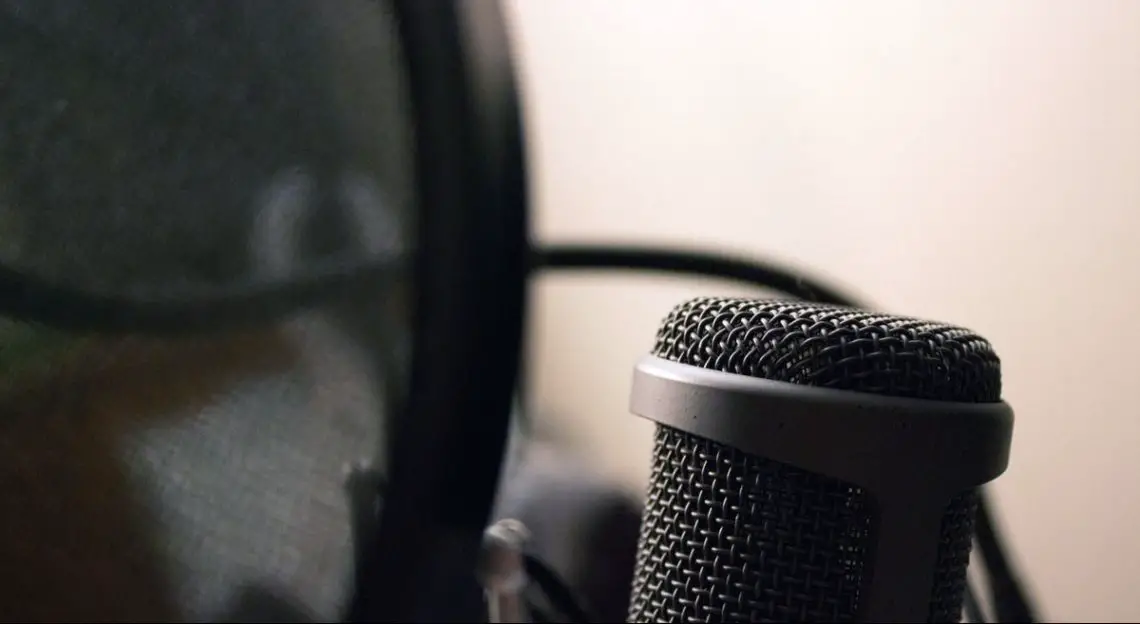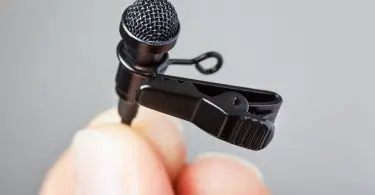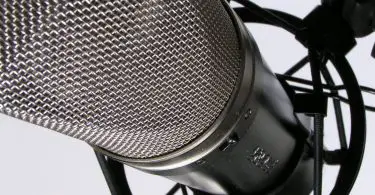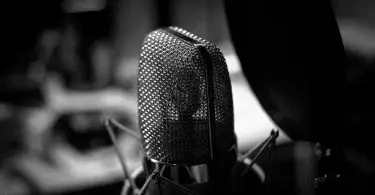The Competition
After hours of testing and research, here's the final competition.
| Instrument | Rating | Current Pricing |
|---|---|---|
The Nady MPF-6 | Highly adjustable: you can swing it back and forth or shift it around in space to adjust to your preferred position |  |
The Pop by Blue | An elite brand known for their exceptional quality |  |
Mudder Pop Filter With Double Layer | Curved shape in order to let you move a little in front of the mic |  |
Pauly Ton Pauly Superscreen | Handmade screen that simply does not compare to anything else on the market |  |
Avantone PS-1 PRO-SHIELD | Curved surface of the filter gives you some leeway to move at different angles |  |
After some research and testing, I’ve decided that the best pop filter for the money right now is the classic Nady MPF-6. It’s been around for a while, but it’s still a fantastic deal. However, you should read on to see why I picked it, what makes a good pop filter, and what other filters I think are worth a look.
In this post I’ll run down several options in different price ranges so everyone has something to learn about a pop filter that will suit their needs and their budget.

Credit: Nady Systems
Top Pick: Nady MPF-6
First introduced 15 years ago, there is very good reason that this filter has an excellent reputation.
I’m a musician with years of experience recording, and for this post I invested extra time in trying out an array of different pop filters. I was especially careful to examine the value you get for your money, because many pop filters are similar. I created a shortlist using online reviews and recommendations from friends, then tested them out in turn to create a final list.
I picked a number 1 filter, a runner-up, and some honorable mentions to show you an array of choices across the budget spectrum, so my number 1 might not exactly suit your needs, but you should see a good selection regardless of your situation.
What To Look For In A Pop Filter
Material
There are two primary material types that pop filters use for their mesh component: fabric and metal. In general, fabric is associated with cheaper pop filters and metal with more expensive ones. That does not always mean that the metal meshes are superior, however.
First of all, they can simply be poorly constructed enough to interfere with your sound or insufficiently block plosives. That would be a waste.
Next, some people simply do not like the sound these filters provide. If you are already used to using a fabric filter, and you have tried out a metal one and did not like it, then you should not feel pressure to switch. Go with what works and avoid disrupting your workflow.
But most people find that they prefer the metal type due to its strength and durability. Similarly, if budget is a concern, then just about all of the best affordable pop filters use fabric.
However, for those of you who are fabric diehards or who do not care either way, you can find fabric up at the top end of the price spectrum as well, and I will show that when I review some models later on in this post.
Mount
A big part of the experience of using a pop filter depends on how easy it is to use with your microphone. That, in turn, depends in no small part on the mount that the filter uses. There are a few different designs out there.
Some will clamp directly onto the mic. This has the advantage of always holding the same relative position to the mic and being easy to use anywhere, but they are hard to adjust and adapt to your preferences.
Others will clamp to your desk or to the mic stand. Not only must you choose which clamp location you want, but you also need to pay attention to the gooseneck.
The gooseneck, for those who do not know, is that type of connector that you can bend and twist along its length, and it will hold itself in place. You see the same design on some desk lamps and reading lights.
In any case, the gooseneck is how you adjust most pop filters’ positions, so it is very important that they stay in place even after repeated use. If it starts to sag or droop, that can range from annoying to making the filter useless.
Effect on Sound
Because they stand between you and the mic, a pop filter is going to affect how you sound. Of course, the most obvious effect is the intended one- the removal of the popping plosive effect. That’s the most basic job of a pop filter, and nowadays most of them it very well.
But there is more to sound than just plosives, of course. The mesh stands between you and the mic, and that means that it will block some of the vibrating air that constitutes sound. If the mesh is too tight, you might get reduced volume and distorted frequencies.
For example, it is a common complaint that fabric mesh designs muffle higher notes relative to lower ones, creating an imbalanced tone. The better the pop filter is, the better job it does at blocking out plosives and saliva without altering your sound.
Many pop filters market themselves based on this criteria, and to be honest in quite a few cases you might not be able to hear a difference, especially with proper mixing.
If it matters to you and you do think you can hear the difference, then trust your ears. But don’t overspend if you aren’t sure if the benefit is truly there.
Durability
You always want to care about durability for audio equipment due to how much you need to spend on it. However, durability works a little different for pop filters. You are not just concerned about how long the filter itself lasts.
You also need to consider how much the filter extends the lifetime of your mic. Your saliva contains water and other ingredients that will erode and degrade the quality of your microphone.
The pop filter is designed to block those using the mesh filter. So in the ideal case, a pop filter will make your mic last a lot longer, and while you might need to replace the filter, that should be cheaper than replacing the mic itself.
It is not easy to test exactly how much extra time your filter gives your mic, and it would be expensive and time-consuming to try it out. You need to read about the materials each filter is made of and see what other people have to say about its performance.
Your experience may still vary, but you want to be as informed as possible before you make any purchases.
Value
As I alluded to in the last paragraph, it’s key to figure out how much the filter is saving you in terms of mic lifetime and combine that with how well it controls plosives and how convenient it is to settle on a value for it.
It’s no good paying top dollar for a filter that you need to replace after not much time, because that might be more expensive than just rebuying a new mic instead. The opposite could also hold true: if you buy a cheap one that you must replace soon after you buy it, the small replacements could add up to be pretty expensive.
Settle on a value that works for you and your budget. In general, it probably does not make much sense to spend more than your mic on a filter. There is a wide range of options, though, and you’ll need to decide how much you are willing to spend and what you want the filter to do for you.
It’s true in this market that each price segment has a lot of overpriced duds with a few gems, and knowing which models are the gems is a good way to get an accurate assessment of the value of each level of quality among pop filters.
Top Pick: The Nady MPF-6

Credit: Nady Systems
My choice for the best pop filter you can buy is probably not a surprise: the Nady MPF-6. The Nady has been around for a long time, and it has a well-deserved reputation for the value it gives you. For the price, you get a surprisingly good fabric mesh, a sturdy gooseneck, and a clamp.
The filter itself is highly adjustable: you can swing it back and forth or shift it around in space to adjust to your preferred position. It does not do anything unique or offer any features that you can’t find anywhere else. Instead, the standout attribute of the Nady is simply how little you need to pay for a very good pop filter.
It might surprise you to learn that the feature set on the Nady is typical for filters that run triple or more the filter’s price. Typically, such a low price indicates flimsy construction and shoddy workmanship. There is a small amount of assembly required when you open the box, but the instructions are clear and the customer support is available.
The main concern when you get this low in price is that something will break due to weak materials, often the gooseneck or clamp. The Nady’s gooseneck will last for far longer than you might expect, and if you do not use it often it may last as long as your mic.
The total package is quite impressive because for more expensive filters the investment in the MPF-6 might not be enough to cover the shipping cost, let alone the price of the filter. There are far too many cheap filters that market themselves very well or have a stronger brand, but the Nady is by far the best option in this price range. That means a lot because it really had to catch on via word of mouth over time.
In the world of musicians and performing artists, word of a good deal spreads fast. Despite the fact that Nady has had an excellent reputation for years through this model, they have not made it more expensive or increased their profit margin.
If anything, the price has come down since the MPF-6 was introduced about fifteen years ago. That might seem like a long time, but pop filters do not have particularly fancy jobs, so they don’t need much innovation to perform well.
Runner-up: The Pop by Blue

Credit: Blue
For my runner-up I want to showcase a pricier option: The Pop by Blue Microphones. If you have spent any time working with mics, then you should know the name Blue Microphones. They are an elite brand known for their exceptional quality. The Pop marks the first time Blue wandered into the filter arena. It will run you about $50.
The Pop has a metal wire mesh, as opposed to the fabric of the Nady. The mesh is strong and tight without placing an undue burden on the tone by blocking too much air. The whole apparatus clamps to any mic stand.
What really sets it apart is its ability to filter plosives. It’s a good idea to block the force of plosives because it can damage mics, but the Pop does at excellent job at filtering out that percussive element while leaving the rest of the sound untouched.
It is pricey compared to the Nady, but you should expect it to last for years of professional use. So the up-front cost is higher than other options, but when you consider how long it will last, the value in the Pop is actually rather good.
Honorable Mentions
Mudder Pop Filter With Double Layer

Credit: Amazon.com
The Mudder is an attractive design. It uses two layers of mesh to provide increased protection for the mic. Each layer is a plastic wire mesh, and it has a curved shape in order to let you move a little in front of the mic if you want. Many filters are round and flat, so you are restricted to staying in one spot.
This can make it harder to feel the music, so the extra space is welcome. The Mudder costs under $15 and you can usually find it for considerably less than that. Perhaps the biggest drawback is the fact that despite its interesting construction, the Mudder is actually not that great at blocking plosives. It is inexpensive, but there are filters at the same price or less that do a better job.
Unless you are truly wedded to the form factor or you like the way it sounds, the Mudder won’t be a long-term solution. However, you can use it as a travel filter, a backup, or for side projects where you want a different sound. It’s not a bad filter; it just wasn’t as good as my top choices, which still places it among the better options on the market.
Pauly Ton Pauly Superscreen

Credit: PaulyTon
I’m including the Pauly so that you can see what the top of the market looks like. This model will cost you about $270. That seems like an absurd price, and I honestly agree. I don’t own one of these, but I have gotten the chance to try one out. It is just as good as the price implies.
It has a handmade screen that simply does not compare to anything else on the market. It is somehow light enough to drain plosives of all their force without affecting the tone, while being tough enough to last. The obvious problem is that it is very hard to justify spending $270 on such a relatively minor accessory when there are much cheaper options available.
Think about how much more you could put into a mic or something else instead of spending that much money on a pop filter. If you really do have the money to spend, then this could indeed wind up being a win, but see if you can at least try it out first.
It is comfortable and extremely easy to use and adjust, with a flexible gooseneck. It is on the small side at 4 3.4 inches- the biggest sizes for a filter are around 6 inches.
Avantone PS-1 PRO-SHIELD

Credit: Avantone Pro
The Avantone PS-1 has a fresh and unique design that looks like a shovel, with the pointed end at the top. It sits right up against the mic unlike most other pop filters, which tend to be several inches separated from the mic surface. The curved surface of the filter gives you some leeway to move at different angles.
The PS-1 also has solid fundamentals: it does a particularly good job at filtering plosives and it has a metal screen. Metal screens are tougher, and they are a lot easier to clean. The Avantone will run you $34, placing into the middle of the market.
That’s a good price for the quality of filtering and the convenience. It loses points for the short gooseneck, which somewhat limits where you can position it.
Featured Image Credit: Microphone and Pop Filter Anthony Storo







Start the discussion at talk.hearthemusicplay.com